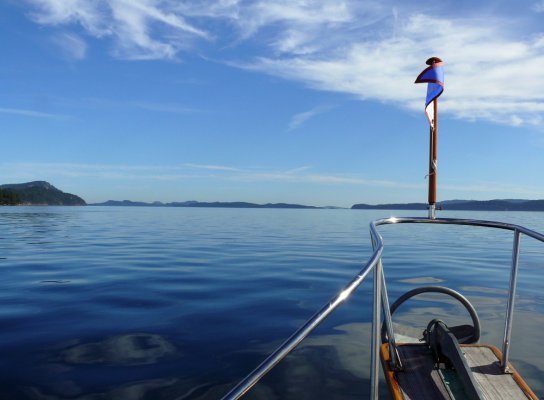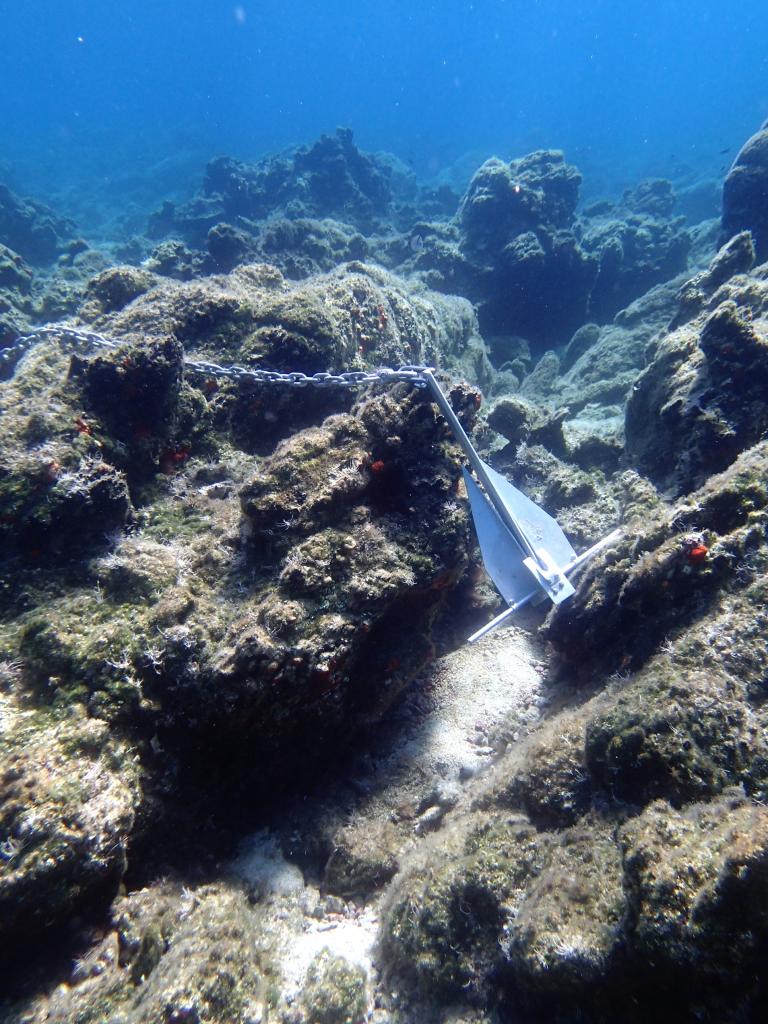Reading this thread it appears a few of them may be in here.

Well, let's see. We anchored in several places in several different bottoms and when the winds came up the Bruce let go (after setting fast and solidly) and dragged like a skateboard. After replacing the anchor some eight years ago now, we have continued to anchor in the exact same places, and sometimes the wind has come up considerably stronger than it did when we had the Bruce drag. Exact same boat, exact same rode, exact same ratio ( we never anchor with less than 5:1 and often use 7:1), exact same setting method.
And we have yet to have this anchor drag anywhere, any time.
Conclusion: in small sizes (33#, 44# or less) a Bruce is totally unreliable under pressure. Our assessment (as well as the assessment of people we know who've had the same experiences with the same anchor) is the Bruce sucks.

Except as a door stop as mentioned previously. We had a number of people including Eric of this forum offer to buy the anchor as it was a genuine Bruce. But we refused to sell it because in our opinions this would be passing on an unacceptable risk to an unsuspecting boater. In the end, when we didn't need it as a door stop anymore, we cut it in half and took it to the transfer station.
I am well aware that there are many thousands of boaters who have Bruce/claw anchors. It's probably the most numerically popular anchor in the PNW along with the CQR. And in the case of experienced boaters like Carl with his big 100-plus pounder, his experience doesn't surprise me at all. As I've stated, our Bruce always set fast and set very well initially. But the vast majority of those many thousands of Bruce/claw owners probably don't use their anchors at all. Of the power boaters we know or have met, most of them tend to be dock hoppers or only use the mooring balls in the parks. Or they only go out and anchor in mild weather.
But I would never recommend a small claw to any boater. Ever. One can totally discount our and our friends' experiences if one wants to: the Bruce/claw comes in at or near the lowest holding power in every anchoring test I've ever seen. And I don't care how well an anchor sets, if it doesn't hold under pressure it's sort of worthless in my view.
There are FAR more reliable anchors on the market in the smaller sizes, be they rollbar, Danforth-type, etc. So in my view, why buy a risk when you don't have to? Unless one knows they will always be anchoring under conditions where the anchor will not be subjected to heavy loads and the Bruce/claw's fast setting in a wide variety of bottoms is the most important attribute one needs in an anchor.
That's why we bought ours. And we learned to regret it when we were caught out in higher winds and waves than we had initially thought we'd ever encounter.
Live and learn.







 .
.